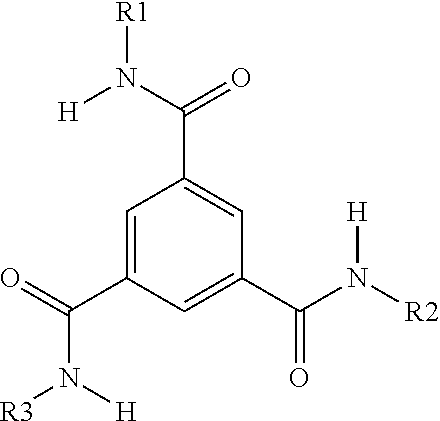Fibers and Nonwovens with Improved Bonding Properties
a technology of nonwoven fibers and bonding properties, applied in the field of fibers, can solve problems such as poor bonding properties, and achieve the effect of improving bonding properties and acceptable mechanical properties
- Summary
- Abstract
- Description
- Claims
- Application Information
AI Technical Summary
Benefits of technology
Problems solved by technology
Method used
Image
Examples
examples
Test Methods
[0089]The melt flow index was measured according to norm ISO 1133, condition L, using a weight of 2.16 kg and a temperature of 230° C.
[0090]Molecular weights are determined by Size. Exclusion Chromatography (SEC) at high temperature (145° C.). A 10 mg PP sample is dissolved at 160° C. in 10 ml of trichlorobenzene (technical grade) for 1 hour. The analytical conditions for the Alliance GPCV 2000 from WATERS are:[0091]Volume: + / −400 μl[0092]Injector temperature: 140° C.[0093]Column and detector: 145° C.[0094]Column set: 2 Shodex AT-806MS and 1 Styragel HT6E[0095]Flow rate 1 ml / min[0096]Detector: Refractive index[0097]Calibration: Narrow standards of polystyrene[0098]Calculation: Based on Mark-Houwink relation (log(MPP)=log(MPS)−0.25323)
[0099]The 13C-NMR analysis is performed using a 400 MHz Bruker NMR spectrometer under conditions such that the signal intensity in the spectrum is directly proportional to the total number of contributing carbon atoms in the sample. Such con...
PUM
| Property | Measurement | Unit |
|---|---|---|
| melting temperature | aaaaa | aaaaa |
| melt temperature | aaaaa | aaaaa |
| molecular weight distribution | aaaaa | aaaaa |
Abstract
Description
Claims
Application Information
 Login to View More
Login to View More - R&D
- Intellectual Property
- Life Sciences
- Materials
- Tech Scout
- Unparalleled Data Quality
- Higher Quality Content
- 60% Fewer Hallucinations
Browse by: Latest US Patents, China's latest patents, Technical Efficacy Thesaurus, Application Domain, Technology Topic, Popular Technical Reports.
© 2025 PatSnap. All rights reserved.Legal|Privacy policy|Modern Slavery Act Transparency Statement|Sitemap|About US| Contact US: help@patsnap.com

